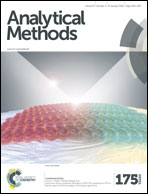Application of electronic tongues in food processing
Abstract
This review describes the basic principles and applications of electronic tongues (e-tongues) in the food industry. It explains the application of e-tongues to eliminate panelist bias for taste evaluation of food products. The evaluation of dairy and food products for their organoleptic properties is one of the essential requirements for the development of newer items as well as their perfection at the stage of production or marketing. In the era of sensor technology, the evolution of e-tongues has initiated renaissance in sensory assessment of foods. This paper covers the structure and main principle along with the detection systems used in the e-tongue development. It also includes various advantages and disadvantages over the human panelists and concluding in the end with the applications of e-tongues in monitoring the sensory quality of foods.


 Please wait while we load your content...
Please wait while we load your content...